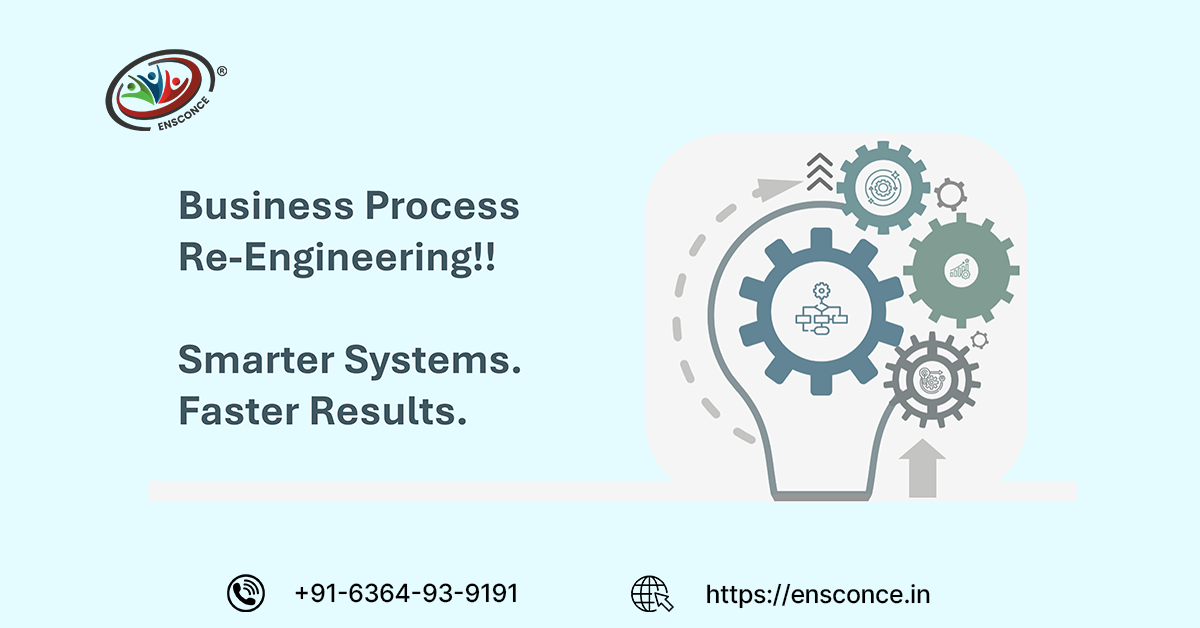How Business Process Reengineering Drives Organizational Transformation
Introduction
It began with a moment of clarity, a lean, modern enterprise built not on incremental tweaks but on bold reinvention. That spark is at the heart of Business Process Reengineering (BPR). More than a methodology, BPR is a strategic mindset that dares organizations to do away with outdated workflows and rebuild for growth, agility, and resilience.
What Is Business Process Reengineering (BPR)?
At its core, BPR is a radical redesign of workflow, not minor revisions, but questioning the very purpose of each process, driven by strategic goals. As one expert put it: it's not about automating the old, it's about obliterating it and starting fresh.
Key Principle: BPR challenges the fundamental question "Why do we do this?" rather than "How can we do this better?" It's about radical transformation, not incremental improvement.
Why BPR Matters in Today's Businesses
1. Cost Reduction & Efficiency
BPR eliminates wasteful steps, streamlines operations, and saves both time and money.
2. Elevate Customer Satisfaction
By redesigning end-to-end workflows, organizations deliver faster, error-free services.
3. Boost Employee Productivity
Leveraging modern tools and redesigning systems removes bottlenecks.
4. Accelerate Time-to-Market
Streamlined processes amplify speed and agility.
5. Foster Innovation & Strategic Alignment
Organizations align operations tightly with business goals and encourage innovation.
How to Execute BPR Effectively
Step 1: Assess & Align
Begin with clarity. Define your mission, strategic goals, and customer needs.
Step 2: Map Existing Workflows
Visualize every step. Process maps reveal bottlenecks, redundancies, and hidden costs.
Step 3: Reimagine From Scratch
Ask bold questions: Why do we do this? Who benefits? Rebuild processes around outcomes.
Step 4: Integrate Technology
Automation, AI, and digital platforms bring redesigned processes to life.
Step 5: Manage Change Proactively
Engage employees with transparent communication and training.
Step 6: Measure & Continuously Improve
BPR is not one-and-done. Track KPIs like cost, time, and satisfaction, and keep refining.
Structured Funnel Campaigns & Lead Generation Impact
BPR doesn't just optimize processes; it transforms how leads are generated and nurtured:
- Awareness Stage: Faster, clearer messaging sets the brand apart.
- Engagement Stage: Automated workflows provide seamless touchpoints.
- Conversion Stage: Streamlined flows improve response times and reduce cost-per-lead.
The result? Higher-quality leads at lower cost and improved ROI.
Personal Story: Real-World BPR Success
We once worked with a mid-sized SaaS firm struggling with slow onboarding and overwhelmed customer support. The team was fragmented, morale low, churn rising. BPR changed everything:
- We mapped every step, from sign‑up to first value.
- We removed redundant approvals, automated verifications.
- Customer handoffs became clear, teams worked in sync.
Within three months: onboarding time halved, customer satisfaction rose by 30%, and staff felt energized.
Frequently Asked Questions
Conclusion — Why Now Is the Time for BPR
In a rapidly shifting landscape, organizations can no longer afford incremental. BPR offers a bold path forward: aligning processes with purpose, technology with people, and strategy with action. By redesigning from scratch, companies can reduce cost, accelerate responsiveness, elevate satisfaction, and lead with impact.
At Ensconce, we champion these transformations, not by patching old systems, but by crafting futures that work. Ready to reimagine your processes? Let's start the conversation.



